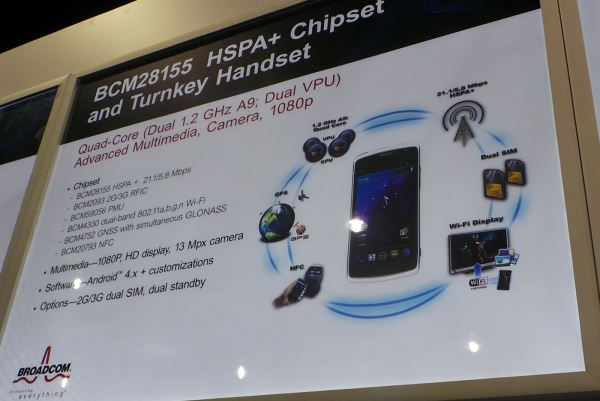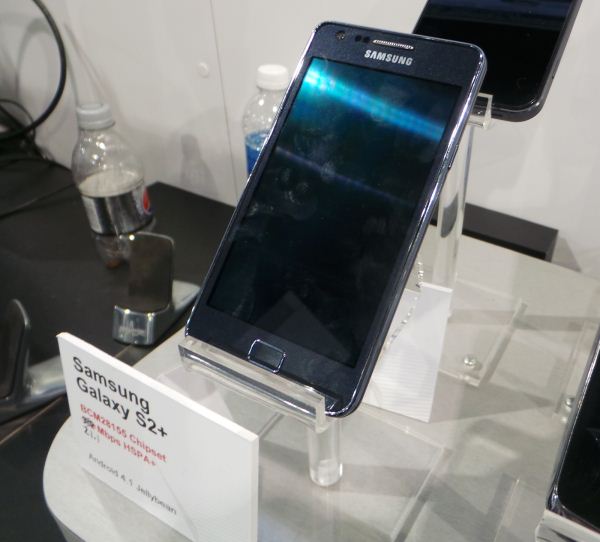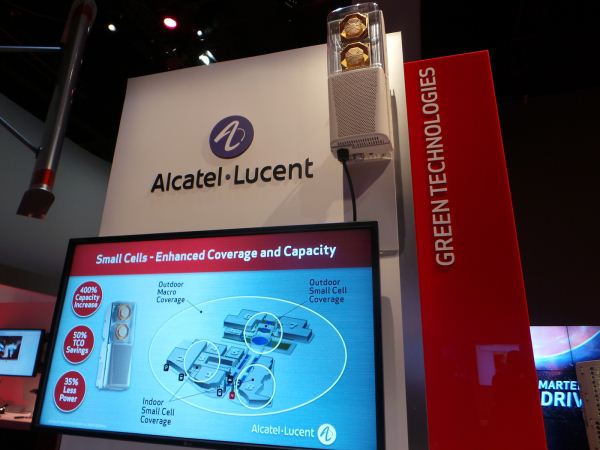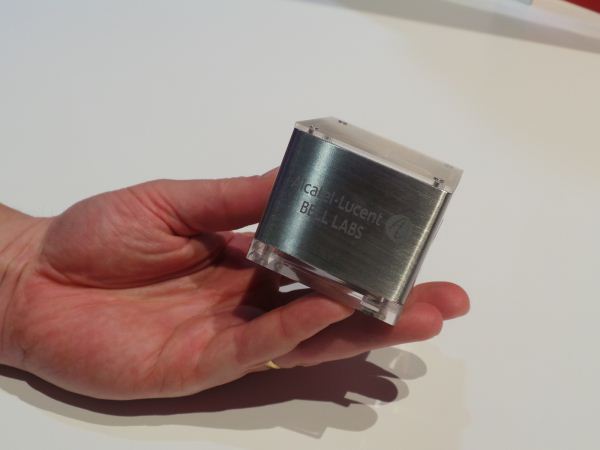Results 2,531 to 2,540 of 12095
Thread: Anandtech News
-
01-10-13, 11:00 PM #2531
Anandtech: SilverStone's New Fortress FT04 Flagship Enclosure Promises Much
No trip to CES would be complete without a visit to SilverStone, but this year was especially important for me. I've been a longtime advocate of the Fortress FT02 as possibly the finest air-cooling enclosure ever built, but their Temjin TJ08-E took me (and even some of their engineers) by surprise. That Micro-ATX enclosure turned out to produce absolutely stellar thermal and acoustic performance with a single 180mm fan, strategically positioned, and I remember telling their rep after I'd reviewed it that I wanted a full ATX model. He demurred about as much as you conceivably can in an e-mail, which was all the confirmation I needed that something like it was in the works.
That something like it will be materializing as the Fortress FT04 and its less expensive cousin, the Raven RV04. Both share the same basic chassis (much as Antec's P280 and Eleven Hundred cases do), but the FT04 benefits from brand new AP182 fans, an attractive aluminum door, and a slicker finish overall. SilverStone's internal testing suggested that the FT04 might actually be able to outperform the venerable FT02 despite featuring one less fan due to smarter filter and grill designs that allow more air to pass into the enclosure. The FT04 also enjoys analog fan controls for both AP182 fans.
Unfortunately I don't have photos immediately available (they're enjoying a leisurely stay in my luggage, which is awaiting transfer to my plane back to the "friendlier" climates of the bay area), but they'll be added when available. In the meantime, the RV04 and FT04 are due to be launched soon, with prices hovering around $150 for the RV04 and $200 for the FT04. That makes them on the pricey side, but if they're anything like the FT02, they might just be worth the expense. More to come (including a review sample) soon.

More...
-
01-11-13, 04:30 AM #2532
Anandtech: The AnandTech Podcast: Episode 14
Although we had intentions of podcasting during CES week, we honestly couldn't find the time among all of the meetings. Finally, on our last night of the show, Brian, Jarred and myself got together and recorded just a small portion of what we saw at the show.
We went over the new Snapdragons, Allwinner's A31 SoC (and the Odna tablet with the iPad 4's display), Broadcom's LTE modem, Galaxy Camera, Oculus VR, Haswell and more. 
The AnandTech Podcast - Episode 14
featuring Anand Shimpi, Brian Klug & Jarred Walton
iTunes
RSS - mp3, m4a
Direct Links - mp3, m4a
Total Time: 1 hour 32 minutes
Outline - hh:mm
Snapdragon 800 & 600 - 00:02 
Allwinner A31 - 00:10
Broadcom LTE thing - 00:16
Galaxy Camera - 00:18
EMBMS - 00:23
Oculus VR - 00:26
Crucial DDR4 - 00:41
M500 SSD - 00:45
Laptop Displays - 00:48
Surface Pro - 1:02
Ivy Bridge 7W - 1:04
Haswell GPU Performance - 1:11
Tegra 4 - 1:16
As always, comments are welcome and appreciated. 

More...
-
01-11-13, 04:30 AM #2533
Anandtech: Death Curry Ravages AnandTech; Future Postings in Jeopardy
Las Vegas is a city of many vices: gambling, women, drink, and Mint Indian Bistro’s Inferno Curry. Some of these may be more tempting to you than others, but thanks to Ganesh we ended up at the Mint Indian Bistro for dinner. Stupidity tends to run in crowds, sadly, and when Brian and Jarred opened the menu and were greeted by the Inferno Curry page, somehow the group was convinced to sign a waiver and order a bowl of pure, chunky death. The foolhardy souls who signed their name to the below death warrant consist of Anand Shimpi, Chris Heinonen, Brian Klug, and Jarred Walton—with Stephen Hornbrook joining them. Rest In Peace.
As you might expect with such warnings, the resulting curry was hot—very hot! The curry contains a special blend of ghost naga chilis, habeneros, seranos, jalepenos, and perhaps a dash or two of hellfire thrown in just for good measure. From the first bite it takes about five seconds for your taste buds screaming in agony to reach your ears. Then your whole mouth lights on fire, your eyes begin to water, and if you’re eating on an empty stomach…well, may God have mercy on your soul. The initial shock isn’t even the worst of it; I think the heat/pain peaks at about a minute after first contact, but it maintains that level for at least five minutes. And that’s with something to help cool off your mouth, like the mango lassi we had—it’s unfortunate that there was no way to hook a fire hose up to the mango lassi dispenser.
The good news is that after the first real bite of the Inferno Curry, your whole definition of hot will have changed, rendering all the remaining spicy Indian food rather mild by comparison. “Still feeling the heat from the curry? Why not suck on some jalapenos to cool your mouth off?” On a scale of 1 to 10, with the Inferno of Death naturally taking the ten spot, pretty much everything you can find at a local food store rates as a two or less. The second and third bites of death actually didn’t seem quite so hot, but after half a dozen bites even the most stalwart among us (Brian and Jarred…idiots!) were ready to call it quits. The concern now is simply this: what will happen before morning? There’s an awful lot of heat still churning in our gullets, so if nothing gets posted tomorrow, you’ll know why.
I should note that there’s actually a challenge at the Mint Indian Bistro: if you can finish off the whole dish, you get your picture on the wall along with a $50 gift certificate for return visits. We’ve got a lot of readers, and I’m sure some of you are in the Vegas area on occasion. The best of us came nowhere near finishing the dish, and even a good whiff of the curry was enough to warn at least one person away. As for the wall of fame, at present there are all of 11 people proudly showing that they have serious willpower—that or they simply can’t taste heat. If you stop by and give the curry a try, though, tell the owners hello from AnandTech—the rest of the non-killer food was actually quite good, in case you’re wondering. Maybe next year we can treat a few lucky souls to the experience, assuming we survive the night.
Goodnight from CES. We’re all heading home tomorrow, after our final meetings. We hope you’ve enjoyed the show coverage at least as much as we enjoyed the curry!

More...
-
01-11-13, 10:30 AM #2534
Anandtech: A Cheaper Way to 4K: Intel’s Collage Driver
A Cheaper Way to 4K: Intel’s Collage Driver
If you heard my recent rant on Podcast 13, my main beef was with the state of monitors to the end user.  With 5 inch 1080p screens becoming the norm, finding a monitor that could show above 1920x1080 in anything less than 27” was quite rare.  An idea thrown around in the Podcast was to place four 1080p 10” tablet screens in a 2x2 arrangement and sell it as a monitor, even if consistency between panels was an issue – this would give 4K in 20”, a form factor that Panasonic showcased at CES with a tablet (albeit with a single substrate).  Thus the only way to get 4K on a home system would be to rig up four small 1080p monitors (small being 20”) and connect them to an applicable graphics setup.
One of the goals of Intel’s HD graphics via a processor is to support 4K resolutions. As part of the CES showcase, Gigabyte demonstrated how they can support 4K via the Intel graphics solution on their motherboards that use two Thunderbolt ports.
Back at Computex 2012 Gigabyte gave us a look at their dual Thunderbolt-enabled motherboard range, and we reviewed the Z77X-UP4 TH soon after.  Each of the Thunderbolt ports complies with the DisplayPort 1.1a standard, giving support for 2K from each.  It has taken since then for Intel to release a driver capable of splitting a 4K stream into separate 2K streams, and Gigabyte put the system together for journalists to see.
The driver supports a number of 4K resolutions, including 3840x2400 (1200p in 2x2), 3840x2160 (1080p in 2x2), 7680x1200 (1200p in 1x4) and 7680x1080 (1080p in 1x4) with variations therein.  In order to support this, the end user needs four DisplayPort enabled monitors, two DisplayPort to Dual DisplayPort adapters, the relevant cables, and if needed, a monitor stand.  A ball park figure for this setup could be around $1400 for cheap displays, making it a relatively simple way to enable 4K using HD Graphics only.
There are a few caveats.  Firstly, the collage driver from Intel is not on final release as of yet, but expected to go live in the next month.  When it does, Gigabyte will have a version on their website for each of their boards.  Another caveat is the infancy of the driver – there is no bezel correction on the version that Gigabyte used, and it is unknown if it will be supported at release.  The final caveat is compatibility – in Gigabyte’s testing of the few DisplayPort to Dual DisplayPort adapters they could acquire in Taiwan, only the one from Lenovo worked for them.  There is a possibility that many more do work, but they are as-of-yet untested.
Stewart Haston from Gigabyte Marketing explains how it is put together:
As a ballpark figure, I put together what a simple monitor setup would cost to support this display:
Four 1080p DP monitors: ~$250 for 21.5”
Two Lenovo DP to 2xDP Adapters: Part #0B47092 ($80 each)
Two mDP to DP Adapters: $10 each
Quad Monitor Stand: $300
Monitor Setup cost: $1480
As for the system to power it, any compatible motherboard and HD4000 graphics combination with memory, case, storage and power supply.  The following is almost the bare minimum, though with memory cheap I went for a dual channel setup, and on the storage side I went for an mSATA SSD as the motherboard chosen supports it.
GA-Z77X-UP4 TH: $185
i3-3225: $148
2x4GB DDR3-1333: $39
300W Bronze PSU: $40
Generic Case: $25+
Crucial m4 64GB mSATA SSD: $70
System Setup Cost: $507
Total cost: $1480 + $507 = $1987
A couple more points to note.  ASRock have released a dual thunderbolt motherboard as well (the ASRock Z77 Extreme6/TB4) so it should work on that.  Also, this setup is using DisplayPort 1.1a – DisplayPort 1.2 should be able to support 4K over a single cable when it is released with the Redwood Ridge Thunderbolt controller.  DisplayPort 1.2 should be able to be daisy chained if monitors have dual DP 1.2 support, but a DisplayPort to Quad DisplayPort device might need to be invented to get around problematic daisy chaining.

More...
-
01-11-13, 09:00 PM #2535
Anandtech: CES 2013: Talking Through The Pain

Anand asked us to say a few words about this year's CES. We're not the sort to award prizes at trade shows, nor do a "Best of CES" type round-up. The idea was more to paint the show in broad strokes. So what's hot at CES? Not CES. 
 
Part way through one of the annual press conferences, an entire market segment was punted. No announcements were ready, and the speaker wholesale punted. They told the crowd to wait a few weeks, for the news to come. it was a heroic moment. During a later meeting, some great technical marketing staff were eager to share as much information as they could. But CES is such an echo chamber of FUD and unclear information, that they were more comfortable waiting till after the show was over. CES wasn’t a vehicle for distributing information, it was an obstacle. Their choice was frustrating, but laudable. 
 
That’s not to imply that stories weren’t told, and that we didn’t learn a lot more than we would have from home. The greatest asset CES has is its attendees. This sounds self-serving, but truly isn’t; our greatest asset is our readers. We are at CES to serve you, to ask your questions, and to relay the news to you. And they are there to answer them, whoever they may be. During CES this year I collected dozens of business cards. These aren’t bragging rights, these are opportunities that we mustn’t waste. Every conversation must be invested in, must be taken for its full value, not just as a way to get answers, but to develop trust and strengthen relationships.
 
There’s a problem though. Whatever else, CES is a business, and it’s hard to make money on other people’s conversations. And so, the over the top press conferences must continue. The massive booths and outsized promises will persist. But if you read something that really captures your interest, something that really wows you, know that it’s likely not something served up in a spectacle. It came from conversations with the people that make CES worth the trip. What’s trending at CES? I don’t know. I was too busy talking to some pretty amazing people. 

More...
-
01-11-13, 09:30 PM #2536
Anandtech: Hands On with Samsung Galaxy S 2 Plus - Contains BCM28155 SoC
Earlier in the week Samsung announced the Galaxy S 2 Plus, a rather strange late-cycle update to the SGS2. The device is pretty much what you'd expect, and contains similar specs to the existing SGS2 — 1.2 GHz dual core SoC, 4.3-inch SAMOLED Plus WVGA display, Android 4.1.2, and quad band HSPA+ 21.1. 
What was unknown about the Galaxy S 2 Plus was which SoC was inside. Originally I assumed this was just a respun Exynos 4 inside, but while I was at Broadcom's booth I noticed the Galaxy S 2 Plus on display, and noted that it includes a BCM28155 SoC inside.
BCM28155 consists of two 1.2 GHz ARM Cortex A9s alongside a two core Broadcom VideoCore IV solution. I'm unclear about fabrication process but suspect 40nm TSMC or so. The entire Galaxy S 2 Plus is one big Broadcom reference design as well, and I'm told this time Samsung finally ditched the discrete Fujitsu ISP in the place of Broadcom's on-SoC ISP. GLBenchmark 2.5.1 was already installed on the device, likely by a customer, however I had trouble getting the device to complete a run. The SGS2 Plus felt speedy, however, I wasn't able to do much in depth benchmarking. 
Gallery: Hands On with Samsung Galaxy S 2 Plus - Contains BCM28155 SoC






More...
-
01-11-13, 09:30 PM #2537
Anandtech: Broadcom Teases its first LTE-enabled Baseband with VoLTE Demo
I dropped Broadcom during CES, and while we've already covered most of what they had to show off, one of the things which immediately caught my eye was a demonstration of VoLTE running on an as-of-yet unannounced LTE baseband of theirs. I've been hearing endless rumbling about Broadcom's LTE baseband being in both testing and validation, and it made its first appearance in a rather coy form at CES 2013. The demo showed off a VoLTE implementation running AMR-WB working on an LTE test box running Band 13 LTE (Verizon), and a good 3.9 (out of 5) MOS (Mean Opinion Score) voice quality score through a Metrico test box. This just demonstrates good voice fidelity through their system and that frames aren't being lost. 
Broadcom showed off a reference design powered by their own dual core A9 SoC which they claim has been in testing and validation at major operators in the US such as Verizon and AT&T. The platform is entirely Broadcom - SoC, WiFi/BT/GPS combo, baseband, and RF. Broadcom isn't announcing a specific part, and declined to tell me any further specifics such as 3GPP Release (you can draw your own conclusions - it is clearly at least Rel. 9), UE Category on LTE, other supported air interfaces (other than 2G, 3G, and 4G LTE), bands, or platform. There are some interesting photos however of the solution being compared in a rather direct fashion to the MDM9x15 and RTR8600 combination in the iPhone 5 where Broadcom claims 37 percent smaller package size (ostensibly for transceiver and baseband), along with support for envelope tracking (driving the power amplifiers intelligently) VoLTE support, and better coexistence with its own combo chips. 
I expect to hear an official announcement with further details at MWC. 
Gallery: Broadcom Teases its first LTE-enabled Baseband with VoLTE Demo




More...
-
01-11-13, 10:00 PM #2538
Anandtech: ADATA’s WiFi Router/Hotspot/Charger
This was something of a unique product, though perhaps not extremely useful. There are plenty of wireless routers, hotspots, and USB charging devices out there, but ADATA is combining the functions into a single device with their AE400 and AE800 DashDrive Air.
The AE400 supports up to 10 devices and includes an SD card reader, so for those times when you’re not looking to connect ten different devices directly to the Internet (hello LVH where you get charged $14 per device per day for crappy Internet!), the AE400/AE800 could prove quite handy. In addition the AE400 has a 5000mAh power bank (single cell, so that would be 18.5-10Wh) that can be used to charge USB devices like smartphones.
The big brother AE800 has all of the same core features as above but it supports just 8 devices and adds wireless repeating functionality, a 500GB internal 2.5” hard drive, and a USB 3.0 interface for external storage. The battery capacity remains the same, so with the need to power the internal HDD along with the WiFi you should expect less battery life while gaining some additional features. ADATA didn't specify the interfaces that they support, which I'd assume means 2.4GHz 1x1:1 MIMO (150Mbps) maximum.
Gallery: ADATA’s WiFi Router/Hotspot/Charger_thumb.jpg)
_thumb.jpg)

More...
-
01-11-13, 10:00 PM #2539
Anandtech: ADATA Shows Off Enterprise SSDs, RAM, NAND, etc.
ADATA invited us to their suite to show us some of their latest and greatest offerings. Most of the items on display have been previously launched, but they did have a couple new pieces of hardware. First up is that ADATA is announcing an enterprise class SSD line, the SX1000. I’m not exactly sure why this is “enterprise class”, however, as they’re using SF-2281 controllers with standard capacities of 120/240/480GB.
Read/write speeds reach up to 550/530MB/s with up to 85K IOPS, which we’ve seen elsewhere. Most enterprise class SandForce/LSi based SSDs use the SF-2581 controller, and ADATA rates their MTBF at 1 million hours with a 3-year warranty, both of which are basically par for the course. Unless I’m missing something specific, the X1000 just looks like any other SF-2281 consumer drive, though I suppose the fact that ADATA’s consumer SSDs with SF-2281 have 7% spare area (e.g. 256GB out of 256GiB) does make the new line potentially more reliable.
Besides the SX1000, ADATA had some mSATA SSDs on show along with new M.2/NGFF SSDs. The M.2 drives include the longer form factor XNS380E with the SF-2281 (again) and capacities of 64/128/256/512GB. The second M.2 SSD is for caching purposes, with a smaller size, a JMicron JMF667 controller, and capacities of 24/32/64GB. Read/write speeds are quoted at up to 450/100MB/s with up to 24K IOPS, neither of which is particularly impressive, but for a caching SSD it’s probably sufficient.
Moving on to the RAM and flash memory, as you’d expect ADATA had a ton of products on display. Most of these aren’t particularly noteworthy (at least not that I can tell), with a bunch of USB sticks, DIMMs, and other devices. The full set of images for all of the above can be seen in the gallery.
Gallery: ADATA Shows Off Enterprise SSDs, RAM, NAND, etc._thumb.jpg)
_thumb.jpg)
_thumb.jpg)
_thumb.jpg)
_thumb.jpg)
_thumb.jpg)

More...
-
01-11-13, 10:00 PM #2540
Anandtech: Verizon shows off Alcatel Lucent LightRadio-based Small Cells - Deploying
I dropped by Verizon's booth at CES 2013 and among all the consumer electronics and devices that we've pretty much already seen before saw one new thing — Alcatel Lucent's small cell based on the LightRadio project. What we're looking at is a Cube Dock 2600 radio head which contains the antenna, RF components, power amplifier, and is designed to work in conjunction with fiber backhaul that ships that downcoverted RF to a baseband in a datacenter somewhere or to a centrally located rack for processing. These are small cells that will radiate around 250 milliwatts of power, with one band per radiohead. 
The Cube Dock 2600 will be deployed by Verizon starting 2H 2013 to do what amounts to hole filling in the operator's network. That is, deployment in small dead zones such as under a bridge or inside a mall that's still too small or under trafficked for a DAS (Distributed Antenna System) or urban environment. 
Gallery: Verizon shows off Alcatel Lucent LightRadio-based Small Cells - Deploying in 2H 2013






More...
Thread Information
Users Browsing this Thread
There are currently 19 users browsing this thread. (0 members and 19 guests)







 Quote
Quote
_575px.jpg)
_575px.jpg)





_575px.jpg)
_575px.jpg)


















Bookmarks